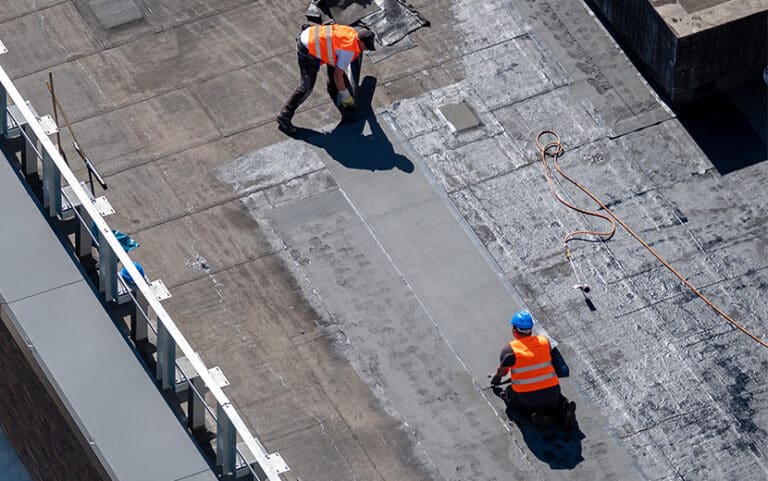What Are the 4 Main Stages of a Commercial Roof Repair
Apr 13, 2023
Do you have a roof that needs repair? If so, you’re not alone. Commercial roof repair is something that many businesses face at some point in their lifespans. Roof leaks can lead to water damage inside and even cause structural problems if left unaddressed for too long.
If you are considering a commercial roof repair, there are four different stages that every business owner should be aware of. Let’s take a closer look at each one:
Stage #1: Inspection and Evaluation
During the inspection and evaluation stage of commercial roof repair, it is important to conduct both an interior and exterior inspection to identify any potential issues with the roofing system.
Interior Inspection
An interior inspection involves examining the building’s ceiling, walls, and attic space to identify any signs of water damage or leaks. It is important to note that these signs can be difficult to spot, especially if the building has been around for a long time. This may include:
- Water stains on the ceiling or walls.
- Peeling or bubbling paint or wallpaper.
- Musty odors or mold growth.
- Damp insulation or wood.
- Cracks or gaps in the walls or ceiling.
Exterior Inspection
An exterior inspection involves examining the roof surface, flashing, and drainage systems to identify potential issues with the roofing system. This may include:
- Cracks or gaps in the roofing material.
- Damage to the flashing around chimneys, skylights, and vents.
- Clogged or damaged gutters and downspouts.
- Damage to the roof’s drainage systems, such as scuppers or drains.
Stage #2: Estimation and Preparation
After the initial inspection, the next stage is estimation and preparation. This stage is crucial in determining the scope of the repair work and the project’s cost. The roofing contractor will provide a detailed estimate of the repairs, including the materials and labor costs. The estimate will also include a timeline for completion.
Once the estimate is approved, the contractor will begin preparing for the repair work. This stage involves ensuring the necessary materials and tools are available and ready for use. The contractor will also ensure the repair work is done safely and efficiently.
Stage #3: Repair and Restoration
The third stage is the actual repair and restoration work. This stage involves implementing the repair solutions identified during the assessment stage. Depending on the extent of the damage, the repair solutions may include patching, sealing, or replacing the damaged areas of the roof.
Once the repair work is complete, the contractor will begin the restoration process. This stage involves restoring the roof to its original condition as much as possible. This may involve repainting or recoating the roof, replacing any damaged insulation, and repairing any other damage caused by the initial problem.
Stage#4: Quality Control
The final stage of commercial roof repair is quality control. This stage involves inspecting the repaired areas to confirm no leaks or other defects. The roofing contractor may also conduct a water test to ensure the repairs prevent water penetration effectively.
The quality control stage is critical in making sure the repair work is effective and of high quality. It helps to identify any issues that may require further attention. It confirms the roof is in good condition and can protect the building and its assets.
Conclusion
You will want to work with a company with industry experience in commercial roof repair. A quality roofing contractor can help you avoid unnecessary expenses and protect your business from water damage, structural problems, and leaks. There is no reason to wait until you have a major problem.
Honey Bees Roofing & Solar is a Fort Worth roofing contractor that can help you with your needs. Our experienced professionals are committed to delivering quality work at an affordable price. We aim to provide you with the best possible service at a fair price.
